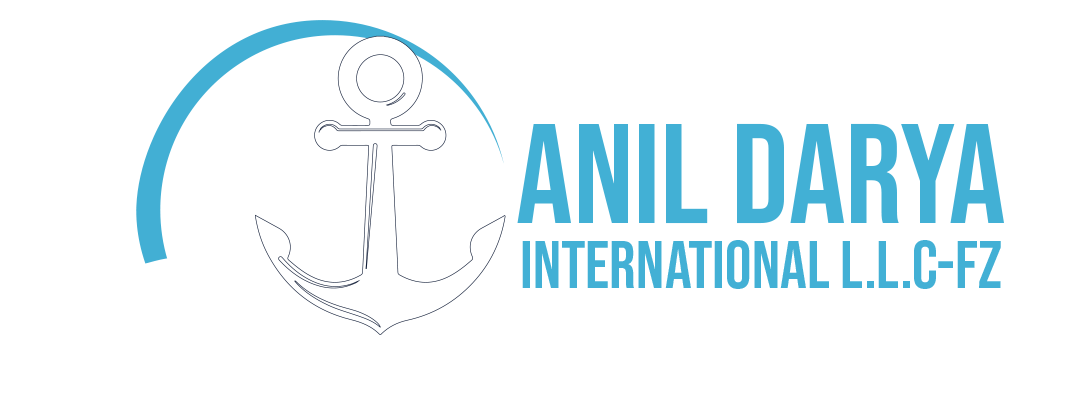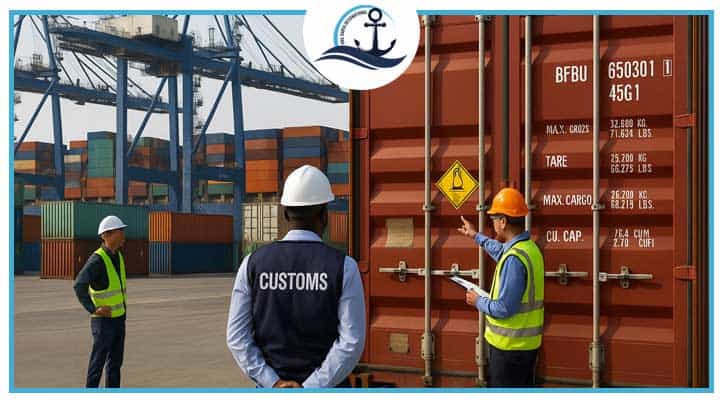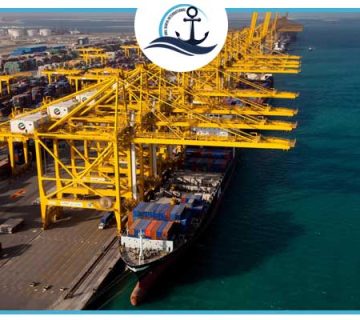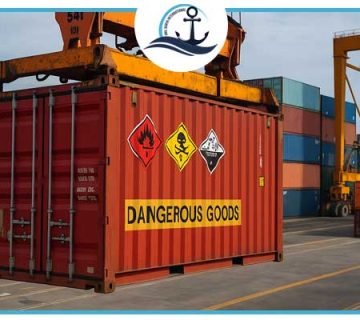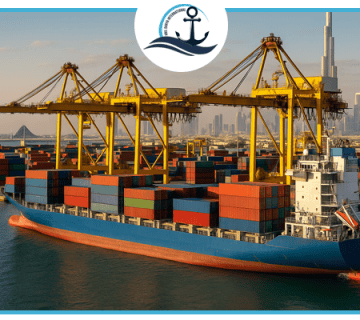|
Getting your Trinity Audio player ready...
|
Customs Clearance for Dangerous Goods in UAE: A Step-by-Step Guide
Transporting and clearing dangerous goods through the UAE—especially via Dubai, the region’s busiest logistics hub—requires precision, expertise, and full regulatory compliance. A minor documentation error or mislabeling can lead to costly delays, fines, or even shipment rejection.
This detailed guide explains how customs clearance for hazardous cargo works in the UAE, step by step. It also explores how Dubai freight costs, fuel price volatility, and broader UAE transport economics affect the process. Throughout the article, we’ll highlight how Anil Darya Shipping, a specialized freight forwarder based in Dubai, ensures safe and compliant handling for every shipment.
1-Understanding Dangerous Goods Regulations in the UAE
Dangerous goods (DG) are substances that pose a risk to health, safety, property, or the environment during transport. They include flammable liquids, corrosives, toxic gases, oxidizers, explosives, radioactive materials, and lithium batteries.
In Dubai, multiple authorities oversee their transport and clearance, including:
- Dubai Customs handles import/export clearance.
- Dubai Civil Defence (DCD) ensures safety compliance and issues DG storage/handling permits.
- Dubai Municipality & Environment Agency regulate pollution and waste management.
- Federal Authority for Nuclear Regulation (FANR) monitors radioactive materials.
On an international level, the IMDG Code (for sea freight) and IATA DGR (for air freight) govern classification, documentation, and labeling.
👉 For example, Anil Darya Shipping always prepares IATA-compliant Dangerous Goods Declarations (DGD) and Safety Data Sheets (MSDS) before any air shipment.
2-Pre-Shipment Preparation: Classification, Packaging & Labeling
Before shipping any DG cargo to or from Dubai, the first and most critical step is accurate classification.
- Determine the correct UN number, class (1–9), and packing group (I, II, or III).
- Use UN-approved packaging designed to contain leaks or pressure changes.
- Attach correct hazard labels and markings (flammable, corrosive, toxic, etc.) on every outer container.
- Ensure old labels are removed to prevent confusion.
Every misclassification can cause customs rejection or even trigger emergency procedures at Jebel Ali Port—which is equipped with special DG zones and strict storage protocols.
3-Documentation Essentials for Customs Clearance
To complete DG customs clearance in Dubai, these documents are mandatory:
- Commercial Invoice & Packing List
- Bill of Lading (Sea) or Air Waybill (Air)
- Certificate of Origin
- Dangerous Goods Declaration (DGD)
- Material Safety Data Sheet (MSDS)
- Import or Transit Permits (for controlled goods)
- Approvals from DCD or Municipality (depending on cargo type)
All documents must be consistent, legible, and match the cargo’s physical packaging. Even a typo in UN numbers or weights can trigger additional inspections.
Anil Darya’s customs team typically double-checks every DGD and attaches translated Arabic copies (when required) to speed up clearance through Dubai Trade Portal.
4-Submission to Customs and Relevant Authorities
In the UAE, clearance is fully digitalized. Through Dubai Trade’s Mirsal 2 system, you can upload shipping documents, pay duties, and track inspection stages online.
However, for DG cargo, additional review from other entities is mandatory. For instance:
- Civil Defence permits for flammable, toxic, or compressed gases.
- Environmental approval for chemicals or waste materials.
- FANR clearance for radioactive goods.
The customs broker or forwarder must coordinate these approvals before final cargo release.
➡️ Partnering with an experienced forwarder like Anil Darya Shipping ensures smooth coordination among all entities and prevents costly delays.
5-Inspection, Risk Control & Safety Measures
Customs officers and safety inspectors at Jebel Ali or Dubai International Airport will verify:
- The cargo’s labeling and packaging integrity.
- The accuracy of DGD and MSDS data.
- Compliance with IMDG or IATA standards.
- Physical condition of containers or drums.
If discrepancies are found, inspectors can request repackaging or re-labeling before clearance.
To avoid this, Anil Darya provides pre-inspection services—checking labels, seals, and compatibility of substances in advance.
At Jebel Ali Port, DG containers are stored in dedicated yards equipped with fire-suppression systems and monitored 24/7 by DCD.
6-Calculation of Duties, Taxes, and Release
Once all inspections are cleared, Dubai Customs assesses applicable import duties, VAT (5%), and service charges.
Customs duty in the UAE generally stands at 5% of the CIF value, but hazardous materials may attract special handling fees or inspection costs.
Payment can be made directly via Dubai Trade e-payment gateways. After settlement, a Customs Release Order is issued, allowing cargo delivery or onward transport.
At this stage, efficient coordination between your logistics agent and port operations is crucial—especially if your goods need temperature control or special truck permits.
7-Economic Factors: Freight Costs & Fuel Price Impact
Dubai Freight Costs
Fuel Price Impact on Shipping
UAE Transport Economics
Dubai Freight Costs
Freight rates in Dubai are influenced by multiple elements: cargo type, route distance, and energy prices.
For DG shipments, costs are usually 10–25% higher due to specialized handling, packaging, and insurance requirements.
In recent years, as global supply chains tighten and fuel prices fluctuate, freight costs across UAE routes (Asia–UAE–Europe) have seen notable swings. Efficient route optimization, such as consolidation or sea-air logistics, can significantly reduce costs.
Fuel Price Impact on Shipping
Fuel is one of the largest cost components in transport economics. A sharp rise in global oil prices increases bunker adjustment factors (BAF) for sea freight and fuel surcharges for air freight.
Learn how Dubai is implementing sustainable and low-carbon transport models in our post on Green Shipping Strategies in Dubai.
This ripple effect impacts importers and exporters directly—especially those shipping from China, India, or Europe to Dubai.
Anil Darya continually adjusts its route planning to minimize these fluctuations, leveraging eco-efficient vessels and optimized air–sea networks to keep pricing stable.
UAE Transport Economics Overview
The UAE logistics sector is a vital contributor to national GDP, supported by advanced infrastructure at Jebel Ali Port, Khalifa Port, and DXB/DWC airports.
However, rising fuel prices, labour costs, and green compliance initiatives (e.g., IMO 2025 emission rules) are reshaping cost structures.
By 2026, analysts project the UAE freight market to exceed USD 35 billion, driven by smart logistics and AI-based cargo monitoring systems.
For a full overview of new safety standards, explore New IMO & UAE Regulations for Hazardous Cargo 2025 a must-read for every shipper handling dangerous goods.
8-Choosing the Right Mode of Transport
Selecting the right transport mode for DG cargo affects both cost and compliance:
- Sea FreightIdeal for bulk hazardous materials, chemicals, and petroleum derivatives. Carried under IMDG standards.
- Air Freight: Best for urgent DG shipments like pharmaceuticals or lithium batteries; governed by IATA DGR.
- Bulk & Break-Bulk Cargo: For oversized or non-containerized items—see our related guide “Optimizing Bulk Cargo Routes From Dubai to Asia and Europe” for route optimization strategies.
- Combined (Sea–Air) Transport: A balanced approach combining cost efficiency and speed, especially on Asia–UAE–Europe corridors.
Anil Darya Shipping’s multimodal network ensures seamless transition between sea and air terminals, handling customs and storage along the way.
Challenges During DG Customs Clearance
Even with preparation, DG shipments face several hurdles:
- Misdeclared cargo: One of the main causes of port delays or blacklisting.
- Permit expiration: Civil Defence or Municipality permits must be renewed before customs filing.
- Packaging mismatch: Using non-UN-certified drums can trigger re-inspection.
- Inconsistent documentation: Minor spelling or weight discrepancies may block system processing.
To mitigate such risks, Anil Darya’s customs department maintains continuous contact with port authorities and tracks every clearance stage until delivery confirmation.
Post-Clearance Handling and Final Delivery
After customs release, DG cargo must be transported to its final destination under strict supervision.
In Dubai, special DG trucking permits are mandatory for moving hazardous goods between ports, free zones, or industrial zones.
Anil Darya Shipping ensures:
- GPS-equipped vehicles approved by DCD.
- Drivers trained under UAE’s DG Transport Safety Program.
- Emergency response kits and safety audits during transit.
For international re-export shipments, re-documentation and transshipment approvals are handled within 24–48 hours via Dubai Customs’ bonded zone process.
Why Work with Anil Darya Shipping
Navigating customs clearance for dangerous goods in the UAE can be complex—but it doesn’t have to be stressful.
Anil Darya International L.L.C-FZ offers an end-to-end DG logistics solution, including:
✅ Pre-shipment consulting and classification assistance
✅ Documentation and permit management
✅ Coordination with DCD, Dubai Customs, and Environment Agency
✅ Sea, air, bulk, and break-bulk freight options
✅ Real-time tracking and customer support
Whether it’s hazardous chemicals, batteries, or industrial cargo—Anil Darya ensures compliance, speed, and safety from origin to destination.
Frequently Asked Questions (FAQ)
Improper labeling, missing UN numbers, and incomplete DGD forms are top causes of clearance delays.
Yes, but they require IATA approval and must comply with packaging Instruction 965 or 966.
Typically 3–7 working days, depending on inspection queues and document accuracy.
Absolutely. Higher fuel rates raise ocean and air surcharges, directly influencing overall shipping expenses.
Yes. The company’s integrated logistics model covers sea freight, air freight, and break-bulk/ bulk cargo for DG and industrial goods.
If you’re an importer, exporter, or trader dealing with hazardous cargo in Dubai, compliance isn’t optional—it’s essential.
